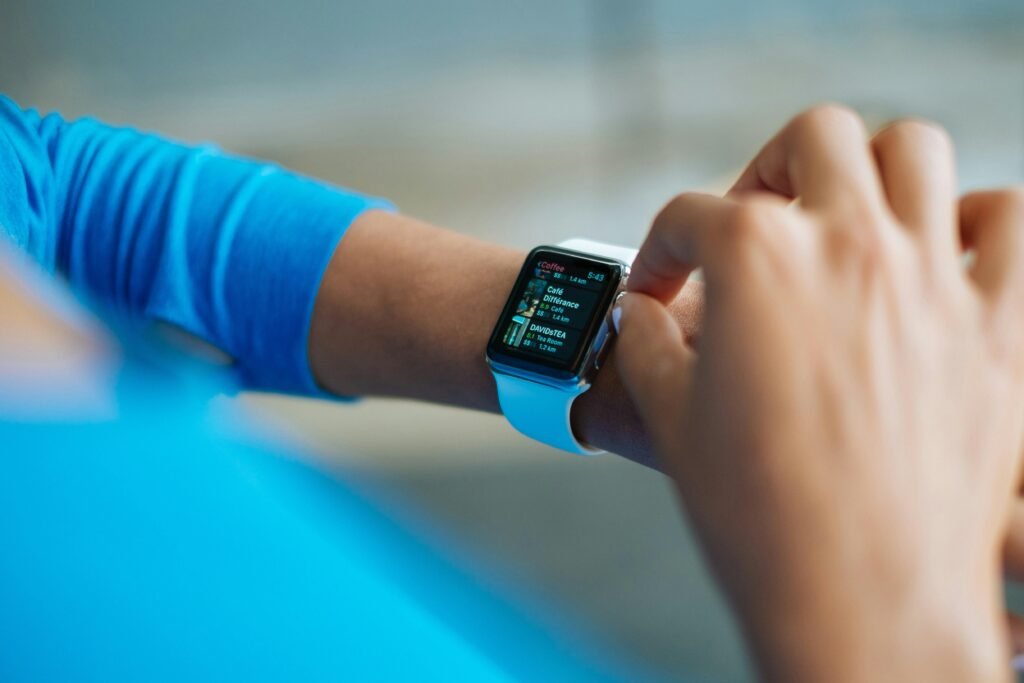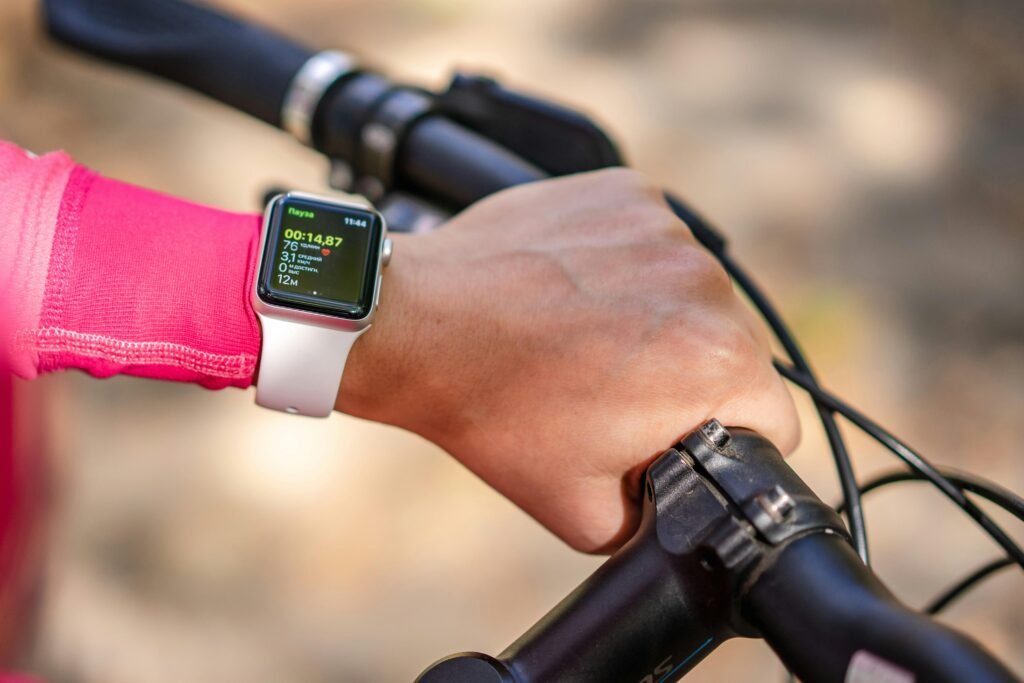
Introduction to Wearable Technology and AI
Over the last decade, wearable technology has evolved dramatically, becoming an integral part of our daily lives.
From tracking fitness activities to monitoring health metrics, these devices offer a seamless blend of convenience and insight.
But what truly sets modern wearables apart is their incorporation of artificial intelligence.
AI algorithms elevate the functionality of these gadgets, enabling them to deliver personalized insights and recommendations tailored to each user’s unique needs.
Imagine a fitness tracker that doesn’t just count your steps but also analyzes your heart rate, sleep patterns, and stress levels to provide a holistic view of your health.
AI enables this level of sophistication, transforming raw data into actionable insights.
As a result, users can make informed decisions about their health and fitness, leading to more effective and sustainable outcomes.
The integration of AI in wearable technology has opened up new possibilities for personalized fitness plans.
Gone are the days of generic workout routines that may or may not address your specific needs.
Today, AI-powered wearables can design customized fitness plans that consider your current fitness level, goals, and even daily activities.
These plans are dynamic, adjusting in real time based on the data collected, ensuring that you stay on track and motivated.
For example, smartwatches equipped with advanced sensors can monitor your physical activities and suggest workout modifications if it detects that you are overexerting or not meeting your fitness goals.
This level of personalization makes achieving fitness milestones more attainable, whether you’re a beginner or a seasoned athlete.
Wearable technology is not just limited to physical health.
Devices are now equipped with features that track mental well being, such as stress levels and sleep quality.
AI algorithms analyze this data to offer personalized advice on how to manage stress or improve sleep habits.
This holistic approach to health ensures that you are taking care of both your body and mind.
Moreover, the data collected by these devices is invaluable for healthcare professionals.
It provides a continuous stream of real-time health information that can aid in diagnosis and treatment plans.
For instance, patients with chronic conditions like diabetes or hypertension can benefit from constant monitoring, enabling timely medical interventions.
The convenience of wearable technology cannot be overstated.
With a simple glance at your wrist, you can get insights into your daily activity levels, heart rate, and even reminders to stay hydrated or take a break.
This ease of access makes it simpler for users to stay engaged with their health goals.
As we move forward, the potential for AI in wearable technology continues to expand.
Innovations such as predictive analytics, where AI anticipates health issues before they become critical, are on the horizon.
These advancements promise to make wearables even more integral to our health and well-being.
Adopting wearable technology is becoming increasingly appealing, thanks to its myriad benefits.
Whether you’re looking to improve your fitness, monitor a health condition, or simply stay informed about your well being, AI powered wearables offer a practical and effective solution.
With continuous advancements in technology, the future of wearables looks bright, promising even more personalized and insightful health tracking capabilities.
AI Powered Wearables for Health Tracking

AI powered wearables have fundamentally transformed how we monitor our health.
These sophisticated devices, equipped with advanced sensors, collect real time data that is meticulously analyzed to provide users with a comprehensive understanding of their health metrics.
This real time analysis ensures that information such as heart rate, sleep patterns, and activity levels are tracked with remarkable precision.
The versatility of these devices is evident from the diverse usage patterns observed in the market.
As of 2020, the distribution of fitness tracker usage was notably varied, with about 40% of the market revenue attributed to running activities, 25% to various sports, 20% to heart rate tracking, and the remaining 15% to specialized activities like glucose measurement, sleep tracking, and cycling.
Among the most popular AI powered wearables are smartwatches equipped with electrocardiogram (ECG) monitors, blood oxygen sensors, and stress level indicators.
These devices do more than just track physical activity; they offer crucial insights into one’s overall well being.
For instance, an ECG monitor can detect irregular heartbeats, potentially alerting the user to seek medical advice before a minor issue becomes a major concern.
Blood oxygen sensors are invaluable for individuals with respiratory conditions, allowing them to monitor their oxygen levels continuously.
Stress level indicators analyze physiological data to provide users with insights into their mental health, suggesting relaxation techniques when high stress is detected.
The importance of these devices extends beyond individual health tracking.
Healthcare professionals find the continuous stream of real time health data invaluable for diagnosis and treatment.
For patients with chronic conditions such as diabetes or hypertension, wearable technology offers a way to monitor their condition consistently.
This continuous monitoring can lead to timely medical interventions, improving the overall management of these chronic conditions.
For users aiming to improve their fitness, AI powered wearables offer dynamic and personalized guidance.
These devices adjust recommendations in real time based on the data collected, ensuring that users receive the most relevant advice.
For example, a smartwatch might suggest reducing workout intensity if it detects signs of overexertion, or it may recommend specific exercises to target weak muscle groups identified through activity tracking.
The real-time feedback provided by these devices is a game changer.
Imagine having a virtual health coach that provides instant insights and recommendations, all derived from your unique health data.
This level of personalization makes it easier to achieve fitness goals and maintain motivation over the long term.
Additionally, the integration of AI in wearable technology has facilitated the development of apps that further enhance user experience.
These apps can analyze data trends over time, offering deeper insights and more tailored recommendations.
For instance, if a wearable device detects consistent patterns of poor sleep quality, the accompanying app might suggest adjustments to bedtime routines or dietary changes to promote better sleep.
The economic impact of AI-powered wearables is also noteworthy.
Each user contributes to the industry’s growth, with an average revenue of $69.66 per user.
As wearable technology continues to evolve, the potential for even more advanced health tracking features grows.
Personalized Fitness Plans with Wearable Tech

Wearable technology has revolutionized personalized fitness plans by harnessing advanced AI algorithms to tailor workouts to individual needs.
Gone are the days of generic exercise routines; now, your fitness journey can be as unique as you are.
One of the standout features of modern wearables is their ability to create highly customized workout plans.
These plans take into account an array of personal data; such as activity levels, heart rate, sleep quality, and even stress levels, to craft exercise regimens that are both effective and sustainable.
Imagine a device that not only tracks your daily steps but also suggests the optimal time for your next workout, based on your unique patterns and lifestyle.
The economic impact of this technology is significant.
Each user contributes to the industry, providing an average revenue of $69.66.
Various case studies illustrate how personalized fitness plans help users achieve their goals.
For instance, someone aiming to lose weight can benefit from a smartwatch that tracks caloric intake and expenditure, offering real time adjustments to dietary and exercise plans.
Similarly, an individual looking to build muscle can receive tailored strength training routines that adapt based on progress and recovery status.
These wearable devices are not just about tracking; they also provide motivation.
Real-time feedback and adaptive suggestions ensure that users stay engaged and motivated.
For example, if your wearable detects that you are not meeting your fitness goals for the day, it might encourage you to take a brisk walk or complete a quick home workout.
This immediate, personalized guidance makes it easier to stay on track.
Moreover, AI powered wearables excel in long term fitness planning.
They analyze data trends over extended periods, offering insights that go beyond daily metrics.
For example, if your device notes that your sleep quality consistently affects your workout performance, it might suggest changes to your bedtime routine or provide relaxation techniques to improve sleep.
The adaptability of these devices is another crucial benefit.
Whether you’re recovering from an injury or experiencing a high stress week, your wearable can adjust your fitness plan accordingly.
This flexibility ensures that your fitness journey remains balanced and considerate of your overall well-being.
Additionally, wearable tech fosters a sense of community and competition.
Many devices feature social sharing and challenge options, allowing you to compete with friends or join virtual fitness groups.
This social aspect adds an extra layer of motivation and accountability, making your fitness journey more enjoyable.
The convenience of integrating wearable tech into daily life cannot be overstated.
From personalized reminders to stay hydrated to alerts that encourage you to move after periods of inactivity, these devices make it simpler to maintain a healthy lifestyle.
AI-powered wearables also contribute to mental well being.
Devices equipped with stress level indicators can offer real time recommendations for relaxation techniques, ensuring that you take care of your mind as well as your body.
Wearable technology has made personalized fitness plans more accessible and effective than ever before.
Whether you’re aiming to lose weight, build muscle, or simply maintain a healthy lifestyle, these advanced devices offer the tools and insights needed to achieve your goals.
Adopting Wearable Tech for Everyday Use

Integrating wearable technology into daily routines can significantly enhance personal fitness and well being.
For successful adoption, users should begin by selecting devices that align with their fitness goals and lifestyle preferences.
Setting realistic objectives and regularly monitoring progress through wearable tech can make the transition smoother.
As of 2020, North America accounted for 42% of the global fitness tracker revenue, reflecting greater awareness and increased adoption in the region.
However, some challenges may arise, such as device compatibility issues or data privacy concerns.
Addressing these challenges involves keeping devices updated, understanding privacy settings, and selecting reputable brands known for robust data security.
Integrating wearable technology into your routine starts with selecting the right device.
Whether you’re aiming to improve your fitness, monitor a specific health condition, or simply stay informed about your overall well being, the market offers a variety of options tailored to different needs.
Smartwatches, fitness trackers, and specialized health monitors all bring unique features to the table.
Once you’ve selected a device, take the time to set it up according to your personal goals.
This might include inputting health metrics, setting daily step goals, or configuring notifications for hydration and movement reminders.
Many devices allow you to sync data with health apps, providing a more comprehensive view of your progress.
One of the primary benefits of wearable technology is its ability to provide real time feedback.
This feature can be especially motivating, as it encourages you to make healthier choices throughout the day.
For example, if your device detects that you’ve been inactive for a certain period, it might prompt you to get up and move.
Similarly, hydration reminders can help you stay hydrated, contributing to overall well being.
The versatility of wearable tech means it can be seamlessly integrated into various aspects of daily life.
Whether you’re at work, exercising, or relaxing at home, these devices offer insights that help you make informed decisions.
For instance, wearing a fitness tracker during a workout can provide immediate feedback on your performance, helping you adjust your routine for maximum effectiveness.
At work, a smartwatch can remind you to take regular breaks, reducing the risk of burnout.
Social features available on many wearables can also enhance user experience.
Competing with friends or joining virtual fitness challenges adds an element of fun and accountability.
This social aspect can be a powerful motivator, encouraging you to stick to your fitness goals and celebrate milestones with others.
Data privacy is a critical consideration when adopting wearable tech.
Ensure that you understand the privacy settings of your device and regularly review them to stay informed about how your data is being used.
Selecting devices from reputable brands known for robust data security can provide additional peace of mind.
Keeping your device updated is essential for optimal performance and security.
Regular software updates often include new features and improvements, enhancing your user experience.
Make it a habit to check for updates periodically to ensure your device operates smoothly.
The adoption of wearable technology offers numerous benefits, from personalized fitness plans to enhanced well being.
Future Trends in Wearable Technology and AI

The future of wearable technology and AI is poised for significant advancements, promising to revolutionize personal health and fitness tracking.
The market for fitness trackers is anticipated to expand to around $114.36 billion by 2028, with an expected annual growth rate of 15.4% from 2021 to 2028.
This projected growth underscores the increasing demand for AI-driven wearable devices.
One of the most exciting trends is the integration of predictive analytics in wearable devices.
By analyzing historical data, AI algorithms can anticipate potential health issues before they become critical, offering proactive recommendations to users.
This could be particularly beneficial for individuals with chronic conditions, allowing for timely interventions and improved health outcomes.
Another emerging trend is the enhanced customization of wearable devices.
Future wearables will likely feature even more advanced sensors and AI capabilities, allowing for highly tailored health and fitness plans.
For instance, devices could soon analyze genetic information alongside daily activity and health metrics to offer personalized lifestyle recommendations.
Wearable technology is also expected to become more seamlessly integrated into our daily lives.
As devices become smaller and more discreet, users will find it easier to wear them consistently, thereby increasing the accuracy and utility of the data collected.
Innovations such as smart clothing and accessories that blend fashion with functionality are on the horizon, making health tracking an effortless part of everyday attire.
Additionally, the global penetration rate for fitness trackers was 2.57% in 2021 and is expected to double by 2026.
This growth indicates a rapidly increasing interest and adoption of wearable technology worldwide.
Asia is poised to be the fastest-growing market for fitness trackers from 2021 to 2028, driven by the fast expansion of the health and fitness industry, increasing interest from working class populations, and the rise of e-commerce.
The evolution of battery technology will also play a crucial role in the future of wearables.
Longer battery life and faster charging times will make these devices more convenient and user friendly, encouraging wider adoption.
Moreover, advancements in data security will address privacy concerns, making users more comfortable with sharing their health data.
